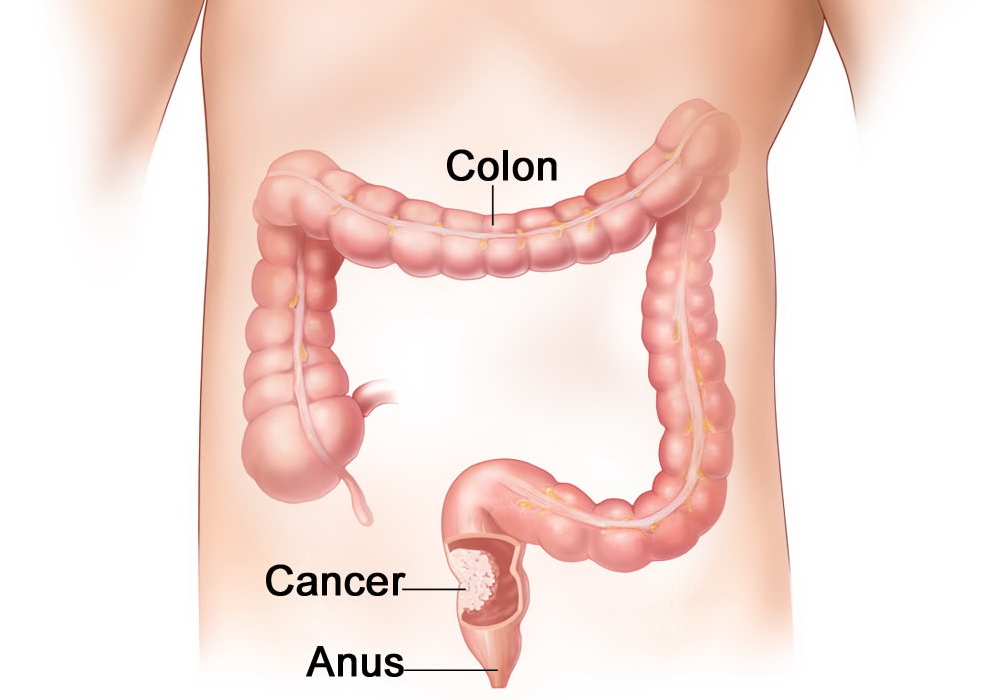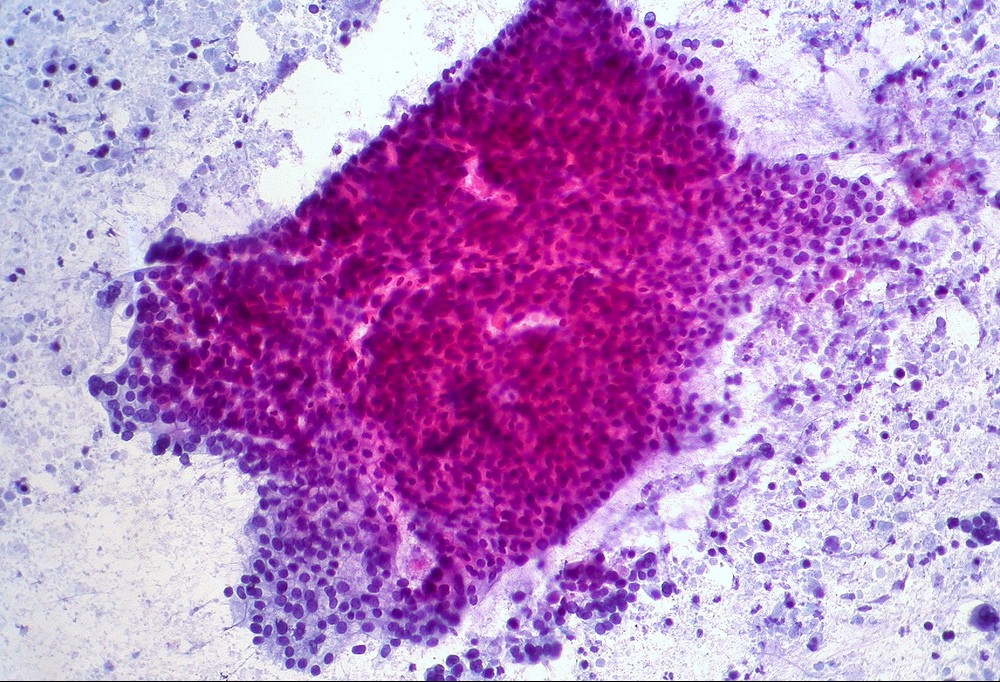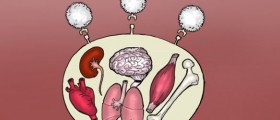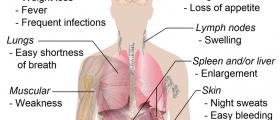
Lung and bronchial cancer
Abnormal lung cells that invade both lungs cause this type of cancer. It is classified into non-small cell lung cancer and small cell lung cancer, which has been related to smoking. Why is it so dangerous? Because the lungs are so big that it is very difficult to identify a lung tumor at an early stage; also, lung cancer symptoms, such as cough and fatigue, are quite unspecific, and are not related to cancer until the tumor is too big or has spread to other organs. Lung cancer is very common: just in the U.S., lung and bronchial cancer represents approximately 13.7% of new cancer cases.
- Important notification about information and brand names used in this slideshow!
- Photo courtesy of Ray Dumas by Flickr : www.flickr.com/photos/rtdphotography/3156834791/
- seer.cancer.gov/statfacts/html/lungb.html
- http://www.lungcancer.org/find_information/publications/163-lung_cancer_101/268-types_and_staging

Colon and rectal cancer
Tumors that grow from the tissue located in the longest part of the large intestine, also known as colon, and the rectum, are produced by intestinal mucus releasing cells. Because of this, they are known as adenocarcinomas. They normally start as small benign tumors called polyps, located in this area of the intestinal system. When they evolve into malignant cells, they start causing intestinal alterations such as bleeding, pain and weight lose. According to the U.S. National Institute of Cancer, around 1,154,481 persons are currently living with colorectal cancer and an estimated of 50,830 patients with this type of cancer died in the year 2013.
- Important notification about information and brand names used in this slideshow!
- Photo courtesy of Korribot by Wikimedia Commons : commons.wikimedia.org/wiki/File:Anastomose_de_colon.jpg
- www.cancer.org/cancer/colonandrectumcancer/detailedguide/colorectal-cancer-what-is-cancer
- http://seer.cancer.gov/statfacts/html/colorect.html
- http://www.cancerresearchuk.org/cancer-help/type/bowel-cancer/about/bowel-cancer-symptoms

Pancreatic cancer
The pancreas is the organ that produces insulin, the hormone that controls the use and storage of blood sugar. Pancreatic tumors are usually detected in advanced stages and people at risk of developing this type of cancer are smokers, diabetic patients and patients with chronic pancreatitis. It is one of the deadliest cancers because pancreatic tumors are very difficult to remove and they can cause blockage of bile conducts. Compared to other types of cancers, such as lung cancer, pancreatic cancer is relatively rare, but only 5% of diagnosed patients survive 5 years or more after the diagnosis.
- Important notification about information and brand names used in this slideshow!
- Photo courtesy of Ed Uthman by Flickr : www.flickr.com/photos/euthman/5558060009/
- www.nlm.nih.gov/medlineplus/pancreaticcancer.html
- http://www.ncbi.nlm.nih.gov/pubmedhealth/PMH0001283/
- http://seer.cancer.gov/statfacts/html/pancreas.html

Breast cancer
Even though breast cancer is one of the most common types of cancer in women, men can get it too. This type of cancer is caused by an abnormal growth of cells in the lining of milk ducts and in the milk glands. What causes breast cancer? It is still not known. There are some genetic mutations that have been related to breast cancer, but lifestyle also plays an important role in the development of this disease. In 2013, 232,340 new cases of breast cancer were reported in the U.S., positioning it as the second most common type of cancer in the American population, just below prostate cancer.
- Important notification about information and brand names used in this slideshow!
- Photo courtesy of Shardayyy by Flickr : www.flickr.com/photos/shardayyy/6320766214/
- www.cancer.org/cancer/breastcancer/detailedguide/breast-cancer-what-is-breast-cancer
- http://www.cancer.gov/cancertopics/types/breast
- http://seer.cancer.gov/statfacts/html/breast.html

Prostate cancer
Prostate cancer only affects men, since it develops in the male gland that is in charge of producing the seminal fluid where spermatozoids are transported. Age is the most important risk factor for prostate cancer development and it is the most common type of cancer affecting American men. It usually starts with an enlargement of the prostate, which can lately affect the urinary system. Prostate cancer has a high incidence, more than 2 million Americans have prostate cancer nowadays, but it is one of the types of cancer with the best survival rate, as 99% of the patients survive for 5 or more years after being diagnosed.
- Important notification about information and brand names used in this slideshow!
- Photo courtesy of Abby Cycotte by Wikimedia Commons : commons.wikimedia.org/wiki/File:Women_Against_Prostate_Cancer_logo.jpg
- www.pcf.org/site/c.leJRIROrEpH/b.5802045/k.6D36/What_Is_Prostate_Cancer.htm
- http://www.cancer.gov/cancertopics/types/prostate
- http://seer.cancer.gov/statfacts/html/prost.html

Leukemia
Leukemia is a blood cancer that causes the liberation of immature white blood cells, from the bone marrow into the blood flow. Immature blood cells don’t function as a normal cell does and because the bone marrow is busy producing immature cells, it doesn’t pay attention to the production of other vital ones, such as mature white cells, red blood cells and platelets. According to statistics provided by the National Cancer Institute, in the U.S., it is a rare type of cancer, compared to breast and prostate cancer, for example. However, it is quite dangerous, since cancerous blood cells can travel easily to other organs, including the brain.
- Important notification about information and brand names used in this slideshow!
- Photo courtesy of Ryan Tir by Flickr : www.flickr.com/photos/ryan_tir/4339438058/
- www.nlm.nih.gov/medlineplus/ency/article/001299.htm
- http://seer.cancer.gov/statfacts/html/leuks.html

Non-Hodgkin Lymphoma
This cancer also affects white blood cells, lymphocytes, specifically. Abnormal lymphocytes form tumors in the lymph nodes and have the ability to spread to other lymph nodes and organs, such as the spleen, bone marrow, liver and lungs. NHL can be divided into the aggressive and the indolent types. People with a suppressed immune system, as well as those who suffer from an autoimmune disease, are at risk of developing this cancer. Based on statistical data, NHL is very common among the American population, with a survival rate of 69%, after the diagnosis.
- Important notification about information and brand names used in this slideshow!
- Photo courtesy of samantha celera by Flickr : www.flickr.com/photos/scelera/5554782615/
- www.cancer.gov/cancertopics/types/non-hodgkin
- http://www.macmillan.org.uk/Cancerinformation/Cancertypes/Lymphomanon-Hodgkin/AboutNHL/HowNHLdevelops.aspx
- http://seer.cancer.gov/statfacts/html/nhl.html

Liver and intrahepatic bile duct cancer
Also known as cholangiocarcinoma, this cancer starts in the bile duct, which is a tube connected to the small intestine and the liver. Its main function is to move the bile, from the liver and gallbladder to the small intestine. The bile is a fluid that is essential for the digestion of the fats present in food. Abnormal duct cells cause bile duct cancer, while abnormal liver cells cause liver cancer. Liver and intrahepatic bile duct cancer is relatively rare, but its percentage of survival of 5 or more years is very low, of 16.1%, just in the U.S. In other parts of the world, however, this type of cancer is more common.
- Important notification about information and brand names used in this slideshow!
- Photo courtesy of Joe Hall by Flickr : www.flickr.com/photos/joebeone/331331911/
- www.nlm.nih.gov/medlineplus/bileductcancer.html
- http://www.cancer.org/cancer/bileductcancer/detailedguide/bile-duct-cancer-risk-factors
- http://seer.cancer.gov/statfacts/html/livibd.html

Ovarian cancer
It is not a common type of cancer, but it is one of the deadliest because it is not easy to diagnose, and when detected, it has already intensified or spread to other organs. Ovarian cancer develops in the ovaries, the female reproductive organs that produce eggs and female hormones. Symptoms usually appear at late stages of the disease, and they include abnormal periods, vaginal bleeding, pain on the pelvic area, among others. In the U.S., 2.4% of cancer patients died of ovarian cancer, in the year 2013 and by this year, almost 200,000 American women were facing ovarian cancer.
- Important notification about information and brand names used in this slideshow!
- Photo courtesy of Benjamin Ragheb by Flickr : www.flickr.com/photos/benzado/92788300/
- www.nlm.nih.gov/medlineplus/ovariancancer.html
- http://www.cancer.gov/cancertopics/wyntk/ovary/page3
- http://seer.cancer.gov/statfacts/html/ovary.html

Esophageal cancer
A tumor in the esophagus, the tube that moves food from your mouth to the stomach, is what is known as esophageal cancer. It is mainly detected in 50 years old or older adults, but is still one of the most rare types of cancer. Esophageal cancer has been related to smoking and drinking too much alcohol, as well as to being obese and to other environmental factors. Cancer of the esophagus represents only 1.1% of all new cancer cases in the U.S. but only 17.3% of these patients get to live 5 or more years after being diagnosed.
- Important notification about information and brand names used in this slideshow!
- Photo courtesy of Dake by Wikimedia Commons : en.wikipedia.org/wiki/File:Pharyngitis.jpg
- www.nlm.nih.gov/medlineplus/ency/article/000283.htm
- http://seer.cancer.gov/statfacts/html/esoph.html



























Your thoughts on this
Loading...